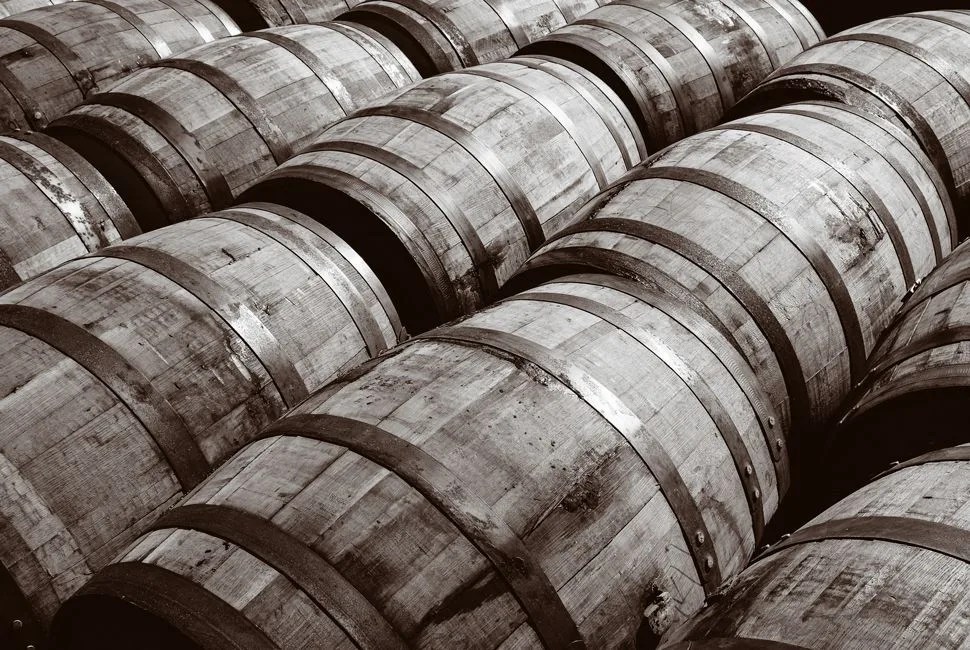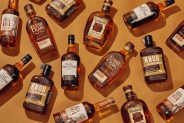Last Updated November, 2017.
The patois of bourbon has developed over centuries. During that time, the language mostly stayed within the confines of distilleries. But now a rekindled obsession for American whiskey is pushing the jargon into the mainstream. Chalk some of it up to a more sophisticated market, and the rest to promotion.
Visiting bourbon country makes one thing inherently clear: very little separates one distillery from another. It’s a game of technicalities. Every bourbon distiller is in the business of aging corn-based whiskey in barrels to put into bottles, but distinguishing their product amid a sea of tempting amber liquids is a different art form entirely. Understanding a few core terms can help any curious whiskey fan understand what they’re buying, and even why they like what’s in their glass. We asked employees in the bourbon industry to arm us with a basic vocabulary.
Bourbon
“Whiskey must follow a specific set of legal requirements to be called a bourbon. It’s unique to the United States and must be made here — but it doesn’t have to be from Kentucky. It must be made of at least 51 percent corn and feature no other flavor additives beyond water. It must be distilled at 160 proof or less and barreled at 125 proof or less in only new charred oak barrels. It must be also be bottled at a minimum of 80 proof. If it doesn’t meet all of those rules, it’s not a bourbon.” – Elizabeth O’Neill, Master Taster for Woodford Reserve
Rye Whiskey
“A rye whiskey has to be at least 51 percent rye in its mash bill. The composite of the rest of the mash bill can be made from either corn or barley. Bulleit Rye is 95 percent rye 5 percent barley. There are some ryes that are merely 51 percent rye. Rye has a very high starch content, so you’re gonna find that a lot of ryes are going to contain malted barley, which breaks the starch down in the rye for the yeast during fermentation. American rye has to be aged at least two years to become a straight rye whiskey. It has to be aged in new charred oak barrels as well. Canadian rye has to meet an entirely different set of parameters. It has a totally different legal definition. They can add artful colors and flavors. So American rye is really where its at.” – Brian Downing, Bartender at The Silver Dollar Louisville, staffer at the Bulleit Frontier Whiskey Experience at Stitzel-Weller
Bottled in Bond
“In the early 1800s people were putting anything in a bottle, any kind of spirit, vodka, gin whatever. They were flavoring it with or coloring it with iodine, tobacco, licorice. Whatever they could find to color it or flavor it to make people believe it was bourbon. Well, it was killing people and making people sick. So the government stepped in and created the Bottled-in-Bond Act. Today Bottle in Bond means, by government standards, it is a minimum of four years old. It will always be bottled at 100 proof. It must also be distilled by one distiller. It sounds crazy, but it is legal to get bourbon from multiple distilleries and put it in a bottle and call it bourbon. But to call it a Bottle in Bond, it has to be one distiller. And it has to be one distilling season — from January to December of the same year. So you’re looking at a very high-quality product. When you see ‘Bottled in Bond’, what you see is quality.” – Sheila Osbourne, General Manager at the Bourbon Heritage Center Heaven Hill Distilleries
“In 1897, Colonel E.H. Taylor, who is a distiller, helps pass what’s called the Bottled-in-Bond Act. The Bottle Act is the first consumer protection act in United States history. It states a handful of things to make a Bonded Spirit. It must be aged at least four years. It must be bottled at no greater or no less than 100 proof, exactly 50 percent alcohol. It must come from grain produced in one season. It must be distilled at one location and aged under U.S. Government supervision. Now what’s interesting is that while there’s a handful of Bottled-in-Bond bourbons, it doesn’t actually only apply to bourbon. Any spirit can technically be Bottled in Bond.” – Brian Downing, Bartender at Silver Dollar Louisville, staffer at Bulleit Frontier Whiskey Experience at Stitzel-Weller

